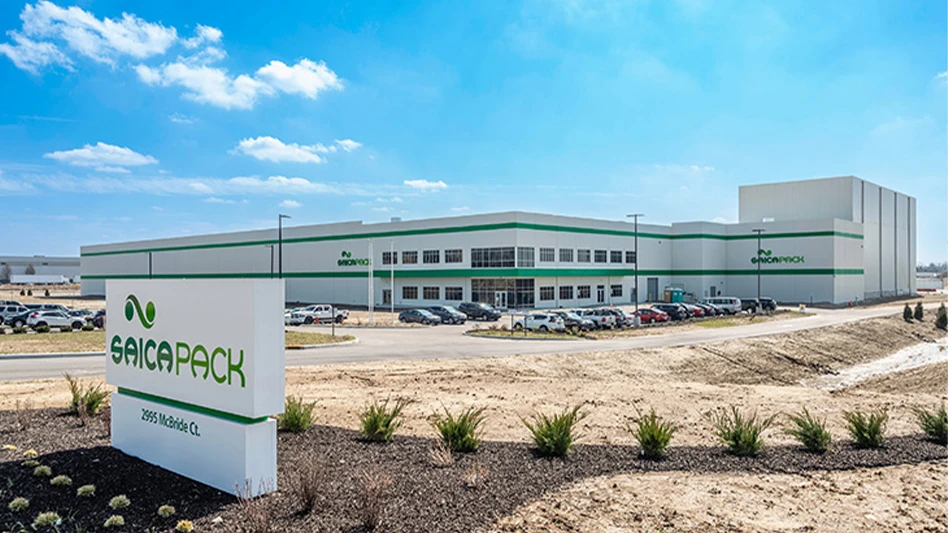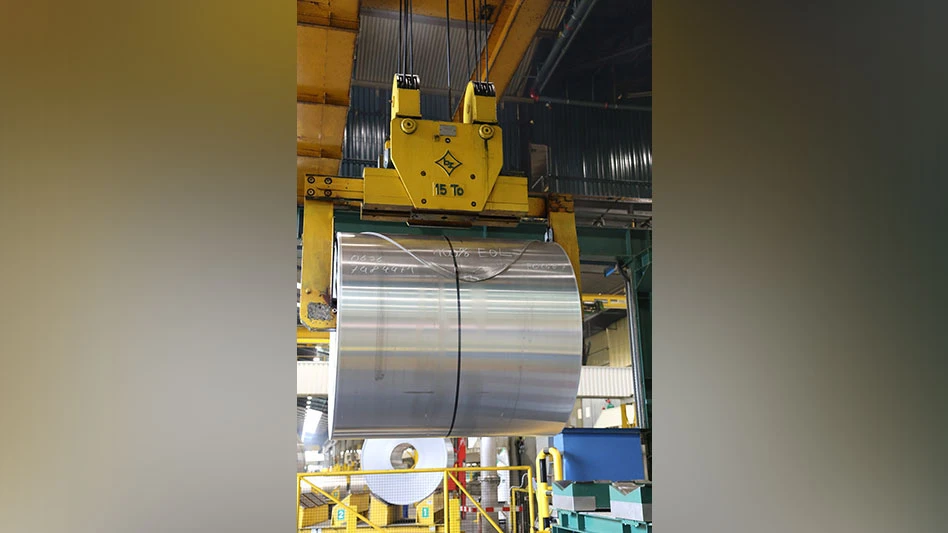The turmoil within the steel industry for the past couple of decades is well documented, with the word "overcapacity" being the most common label applied to the root causes of the industry’s ailments.
But even with overcapacity universally cited as a steel industry problem, the companies that run steel mills seldom voluntarily shut down their own mills, leaving a lingering problem that was finally addressed to some extent during the brutal 1998-2002 timeframe, when a host of bankruptcies and mergers took place.
Several mills were shut down, including some in North America, and the possibility emerged that the overcapacity situation was lessening.
However, as conditions for steelmakers in North America improved in 2002 and 2003, several entrepreneurs—as well as surviving steelmakers—seem poised to re-introduce some of the temporary mothballed plants.
ISG LOOMS LARGE. Perhaps the biggest splash in rescuing and reviving North American steelmaking facilties has been made by ISG (International Steel Group), Richfield, Ohio.
The words the company uses to describe itself in press releases outline the philosophy behind ISG’s strategy:
"The International Steel Group was organized by W.L. Ross & Co. LLC in February 2002 to acquire world-class steelmaking assets and, in full cooperation with the United Steelworkers of America, restructure those facilities to be globally competitive. In its role as a leader in the restructuring and consolidation of the North American steel industry, ISG has purchased the principal steelmaking assets of The LTV Corp. in April 2002; the Acme Steel compact strip production facility in Riverdale, Ill., in October 2002; and the assets of Bethlehem Steel Corp. in May 2003. ISG is one of North America’s largest integrated producers of steel with annual shipping capability in excess of 16 million tons. ISG has operating facilities in ten states including fully integrated steel works in Cleveland, Ohio; East Chicago and Burns Harbor, Ind.; and Sparrows Point, Md."
The company’s activities have resulted in steel mill re-starts in Cleveland; in East Chicago, Ind.; and in Riverdale, Ill.
The 2003 purchase of Bethlehem Steel’s assets probably rescues additional facilities that may otherwise have faced an uncertain future, including the large integrated complexes in Burns Harbor, Ind., and Sparrows Point, Md., and two electric arc furnace (EAF) mills in Pennsylvania.
The CEO of ISG is Rodney Mott, a former executive with Nucor Corp., Charlotte, N.C., who is helping to bring Nucor’s lean management style to ISG.
Along with U.S. Steel Co., Pittsburgh, ISG has emerged as one of two healthy, multi-location steel companies based in the U.S. Subsequently, though, the remaining smaller integrated mill companies may have a tough time competing with ISG’s low-overhead business model (made part in possible by whittling down "legacy costs," or retirement benefits to former workers). In May, employee-owned Weirton Steel Corp. Weirton, W. Va., filed for chapter 11 bankruptcy protection.
ELECTRIC POWER REVIVAL. Although generally considered more able to compete, a number of EAF mills also seemingly made their last batch of steel in 2000 or 2001, as the industry hit a pricing trough while battling low-cost imported products.
But with the protection offered by Section 201 tariffs and subsequent pricing improvements for steel products, some of these mothballed facilities have received new attention.
Among the EAF companies that remained healthy throughout the steel slump were Nucor Corp.; Gerdau Co-Steel, a Brazilian owned firm with North American headquarters in Toronto;and Steel Dynamics Inc., Fort Wayne Ind.
Each of these companies has added capacity in the last three years, often by purchasing troubled companies or their assets.
Even during the seemingly darkest days of the North American steel industry—in 1999, 2000 and early 2001—Nucor Corp. added capacity by buying additional mills and expanding its own plants.
Among the facilities the company has added to its stable of mills is the former Trico mill in Decatur, Ala.; the former Auburn Steel Co. mill in Auburn, N.Y.; several mills that formerly belonged to Birmingham Steel Co., in Birmingham, Ala., Kankakee, Ill., Jackson, Miss., and Seattle; and most recently a former North Star Steel mill in Kingman, Ariz.
The additional facilities—combined with the Section 201 protections—helped Nucor Corp. establish new records for its steel production in the first quarter of 2003. "Steel production was 4,258,000 tons in the first quarter, compared with 3,237,000 tons produced in the first quarter of 2002," the company noted in a recent news release.
Gerdau AmeriSteel Corp., Tampa, Fla., includes a combination of EAF facilities once operated by the Brazilian firm Gerdau and Canada’s Co-Steel as well as the former AmeriSteel, formerly a Tampa-based EAF steelmaker. The company touts its multiple mill locations as an advantage to current and prospective customers.
Steel Dynamics Inc. (SDI), Fort Wayne, Ind., has also operated in the black throughout the steel industry’s difficult years. Last year, the company got into a bidding contest with Nucor Corp. to acquire an idled mill in its home state. SDI eventually won the bid to bring the former Qualitech mill in Pittsboro, Ind., out of retirement.
The company paid $45 million for the Pittsboro site and has announced plans to invest between $60 million and $70 million of additional capital to convert the Qualitech facility to the production of merchant bars and shapes and reinforcing bar products. "Acquiring this mill fits our strategy of pursuing product growth and diversification," Keith Busse, SDI’s president and CEO, said. "We feel that we have acquired a nearly-new Indiana production facility at a very reasonable cost, and, with our planned reconfiguration costs, it should enable us to enter the merchant bar and shapes market as a low-cost producer of these products."
Sponsored Content
Labor that Works
With 25 years of experience, Leadpoint delivers cost-effective workforce solutions tailored to your needs. We handle the recruiting, hiring, training, and onboarding to deliver stable, productive, and safety-focused teams. Our commitment to safety and quality ensures peace of mind with a reliable workforce that helps you achieve your goals.
Sponsored Content
Labor that Works
With 25 years of experience, Leadpoint delivers cost-effective workforce solutions tailored to your needs. We handle the recruiting, hiring, training, and onboarding to deliver stable, productive, and safety-focused teams. Our commitment to safety and quality ensures peace of mind with a reliable workforce that helps you achieve your goals.
Sponsored Content
Labor that Works
With 25 years of experience, Leadpoint delivers cost-effective workforce solutions tailored to your needs. We handle the recruiting, hiring, training, and onboarding to deliver stable, productive, and safety-focused teams. Our commitment to safety and quality ensures peace of mind with a reliable workforce that helps you achieve your goals.
Sponsored Content
Labor that Works
With 25 years of experience, Leadpoint delivers cost-effective workforce solutions tailored to your needs. We handle the recruiting, hiring, training, and onboarding to deliver stable, productive, and safety-focused teams. Our commitment to safety and quality ensures peace of mind with a reliable workforce that helps you achieve your goals.
Sponsored Content
Labor that Works
With 25 years of experience, Leadpoint delivers cost-effective workforce solutions tailored to your needs. We handle the recruiting, hiring, training, and onboarding to deliver stable, productive, and safety-focused teams. Our commitment to safety and quality ensures peace of mind with a reliable workforce that helps you achieve your goals.
Perhaps hoping to follow the business model set forth by these groups, several investors have emerged to bring additional EAF plants out of mothballs.
In just the past 12 months, financing and permitting processes have been explored regarding several idled mills:
• In Alton, Ill., an investor group has worked to reopen the former Laclede Steel EAF mill in that city. Operating under the name Alton Steel Inc., the company has set up a Web site at www.altonsteel.com to communicate with potential customers.
• Last year, Leggett & Platt Inc., Carthage, Mo., acquired a portion of the idled Northwestern Steel & Wire mill in Sterling, Ill. Before it declared bankruptcy in 2000 and was shuttered in 2001, the Sterling mill was a major consumer of scrap iron and steel, with electric arc furnaces melting up to 1.2 million tons per year of scrap. Portions of the Sterling mill purchased will produce wire in its raw form that will ultimately be finished at the company’s seven wire-drawing mills.
• And in Calumet, Ill., an ownership group known as MZG Associates II LLC has submitted a bid to acquire and reopen the former Calumet Steel EAFmill in Chicago Heights, Ill. Calumet Steel formerly produced up to 150,000 tons per year of steel bars and light shapes using two electric furnaces.
For now, Section 201 protections have helped the steel industry seem like a viable investment again in some minds. Whether this is a short-term phenomenon or a longer-term trend may depnd on economic factors that can shift quickly.
Get curated news on YOUR industry.
Enter your email to receive our newsletters.

Explore the July 2003 Issue
Check out more from this issue and find your next story to read.
Latest from Recycling Today
- Steel Dynamics cites favorable conditions in Q1
- Hydro starts up construction in Spain
- Green Cubes unveils forklift battery line
- Rebar association points to trade turmoil
- LumiCup offers single-use plastic alternative
- European project yields recycled-content ABS
- ICM to host colocated events in Shanghai
- Astera runs into NIMBY concerns in Colorado






